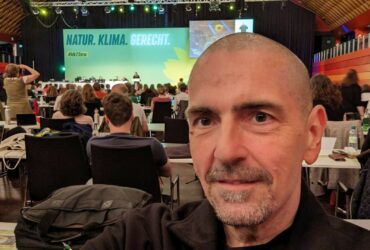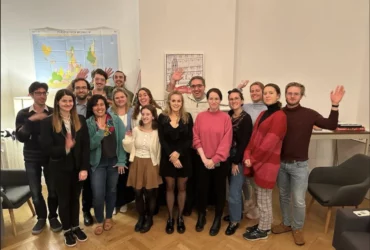The hydrogen strategy: German-Norwegian cooperation as the key to long-term success

Germany will need to secure up to 70% of its future hydrogen demand through imports, with Norway emerging as a crucial partner in this endeavor, leading to closer collaboration between the two countries. Germany is keen on advancing its hydrogen cooperation, and Norwegian companies are in the starting blocks to help shape the future hydrogen market in Germany. The magnitude of this challenge has been summarized by our expert, Eirin Becker.
As the world moves towards a more sustainable future, hydrogen is assuming an increasingly significant role in the global energy transition. In July 2023, the German Federal Cabinet approved the updated National Hydrogen Strategy, initially introduced in 2020. While the strategy remains largely unchanged, it is realigned with the government’s heightened climate protection goals and current energy market challenges. Germany aims to achieve carbon neutrality by 2045 and sees hydrogen as a key solution. The revised strategy seeks to accelerate national hydrogen production, infrastructure expansion, and technology development. However, Germany cannot accomplish this alone.
Domestic Demand Requires International Collaboration
The updated National Hydrogen Strategy estimates the total German domestic hydrogen demand for 2030 to be between 95-130 TWh, with a significant increase expected afterwards. The new target for national electrolysis capacity by 2030 has been raised from 5 GW to at least 10 GW. However, this won’t suffice to meet future domestic demand, and it’s estimated that 50-70% (45-90 TWh) of hydrogen must be imported. Therefore, collaboration at both the EU and international levels is imperative.
The German-Norwegian collaboration is pivotal for the long-term success of the National Hydrogen Strategy. Norwegian energy companies have shown substantial interest in the future hydrogen market in Germany. Earlier this year, Robert Habeck visited Oslo to discuss the production and delivery of Norwegian hydrogen with Prime Minister Jonas Gahr Støre. Simultaneously, Norway’s state-owned oil company Equinor signed an agreement with RWE to build a pipeline for delivering blue and green hydrogen to Germany. In other words, the initial steps toward hydrogen development are already underway.
First Step: Building a Hydrogen Network
The first step, and a fundamental requirement for hydrogen utilization in Germany, is the establishment of a robust hydrogen infrastructure, including hydrogen pipelines and import terminals. This development has already begun. At the end of May 2023, the German government ratified the Energy Industry Act (EnWG), which sets the legal and regulatory framework for the future German hydrogen network. Shortly after, transmission system operators submitted plans for a nationwide hydrogen network to the Federal Ministry of Economic Affairs and Climate Action and the Federal Network Agency (Bundesnetzagentur). These “hydrogen highways” will connect major consumption and production centers.
In the second step, currently in preparation, an “optimized H2 core network” will be developed as part of an integrated network development plan (NEP) for natural gas and hydrogen for the years 2025-2037. However, not all hydrogen is the same. A crucial question relates to the color of the hydrogen that will flow through the hydrogen highways.
The Hydrogen Color Palette – Green or Blue?
Hydrogen itself has no color per se, but colors are used to describe the method of hydrogen production. Green, blue, gray, turquoise, or orange hydrogen? Here, opinions differ on which variant is better and actually needed. The government parties have expressed different views on green and blue hydrogen. While Minister of Economic Affairs and Climate Action Robert Habeck places a strong emphasis on green hydrogen, Federal Finance Minister Christian Lindner asserts that all colors of hydrogen are required. Chancellor Olaf Scholz has been less explicit but leans towards green hydrogen.
The use of hydrogen is planned in areas where renewable electricity cannot be directly applied. The goal of climate-friendly hydrogen production is highlighted in the updated National Hydrogen Strategy, with a particular focus on the production and use of “green” hydrogen. In the initial ramp-up phase, in addition to green hydrogen, “low-carbon blue, turquoise, and orange hydrogen” will be promoted to some extent on the application side.
Hydrogen produced by electrolysis using renewable electricity generates no CO2 emissions and is considered “green.” “Blue” hydrogen, on the other hand, is produced through methane reforming, where the resulting carbon dioxide is captured and stored (CCS). Typical arguments against green hydrogen concern costs, while concerns about the environmental impact of CCS processes, particularly regarding the potential release of stored carbon dioxide and the safety of underground storage facilities, surround blue hydrogen.
Some German research institutes and associations have expressed a clear preference for green hydrogen. Prof. Dr. Claudia Kemfert, Head of Energy, Transport, and Environment at the German Institute for Economic Research (DIW Berlin), cautioned against relying on blue hydrogen for ecological and economic reasons. The German Hydrogen and Fuel Cell Association (DWV) also advocates for sustainable green hydrogen.
Equinor holds a strong position in Norwegian society and has an interest in maintaining the global market for oil and gas. The oil company aims, in collaboration with Wintershall, VNG, and RWE, to play a significant role in the German blue hydrogen market.

Win-Win?
Germany demonstrates a clear interest in a secure and stable hydrogen partnership with Norway. Furthermore, a feasibility study is exploring how and in what quantities Norway can supply hydrogen to Germany. The partnership begins with the delivery of blue hydrogen from Norway, recognizing that this is only a transitional phase. It is emphasized that the production of renewable energy in Norway must be rapidly increased, as this is a prerequisite for green hydrogen production.
For example, Norway has significant potential to expand offshore wind production to produce green hydrogen. With further development of renewable energy, Norway could confidently supply clean and emissions-free hydrogen to Germany. However, Norway must act quickly, as the work has already begun, and the closely neighboring country Denmark is also positioning itself prominently for the export of hydrogen and hydrogen technology to Germany.
Eirin Becker joined Erste Lesung as Public Affairs Executive in August 2023. She is half Norwegian, half German.



